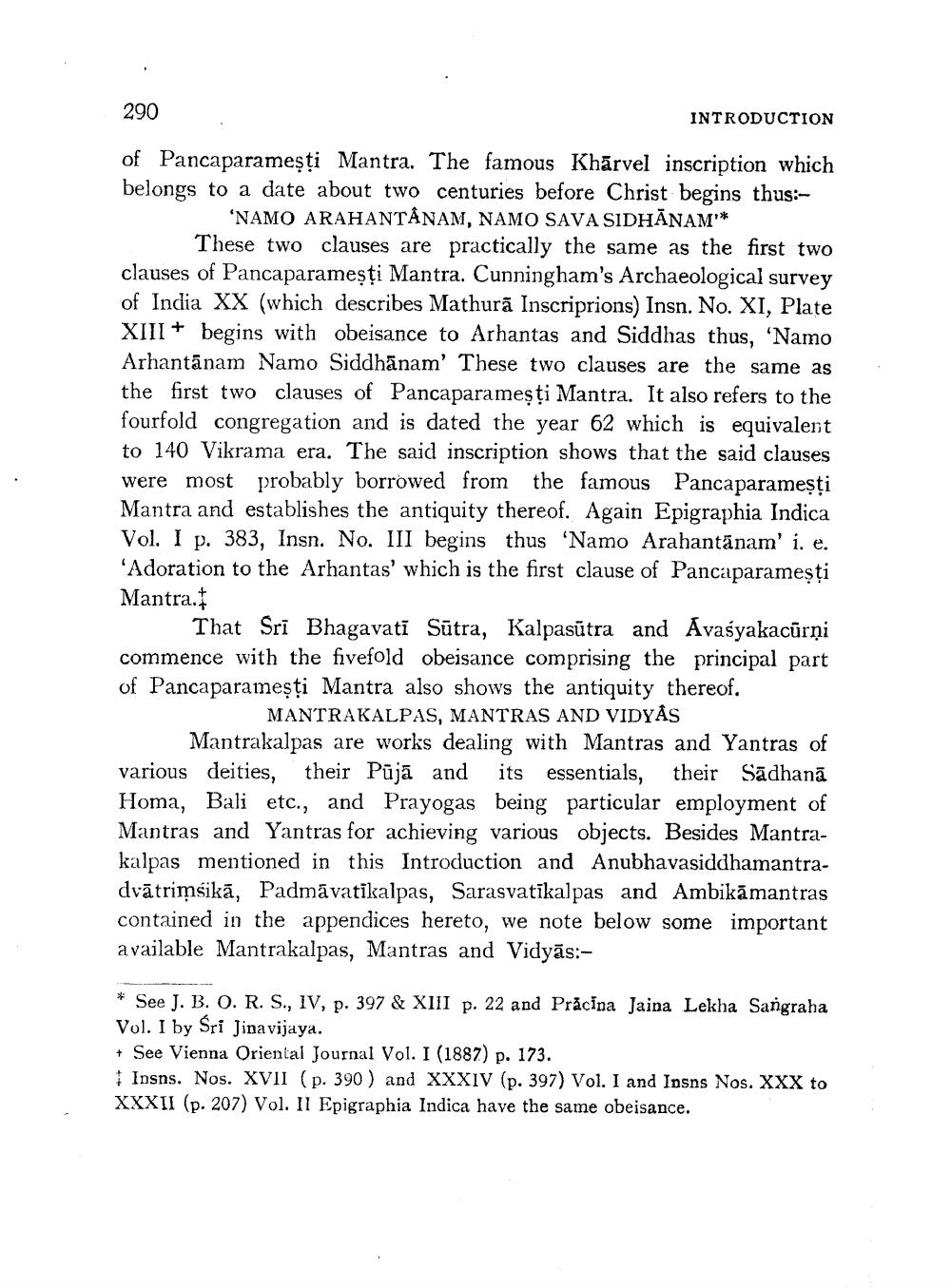________________
290
INTRODUCTION
of Pancaparameşti Mantra. The famous Khārvel inscription which belongs to a date about two centuries before Christ begins thus:
'NAMO ARAHANTÂNAM, NAMO SAVA SIDHĀNAM'*
These two clauses are practically the same as the first two clauses of Pancaparameşți Mantra. Cunningham's Archaeological survey of India XX (which describes Mathurā Inscriprions) Insn. No. XI, Plate XIII + begins with obeisance to Arhantas and Siddhas thus, 'Namo Arhantānam Namo Siddhānam' These two clauses are the same as the first two clauses of Pancaparameșți Mantra. It also refers to the fourfold congregation and is dated the year 62 which is equivalent to 140 Vikrama era. The said inscription shows that the said clauses were most probably borrowed from the famous Pancaparamești Mantra and establishes the antiquity thereof. Again Epigraphia Indica Vol. I p. 383, Insn. No. III begins thus 'Namo Arahantānam' i. e. 'Adoration to the Arhantas' which is the first clause of Pancaparamesti Mantra. I
That Sri Bhagavatī Sūtra, Kalpasūtra and Avasyakacūrņi commence with the fivefold obeisance comprising the principal part of Pancaparamesti Mantra also shows the antiquity thereof.
MANTRAKALPAS, MANTRAS AND VIDYÅS Mantrakalpas are works dealing with Mantras and Yantras of various deities, their Pūjā and its essentials, their Sādhanā Homa, Bali etc., and Prayogas being particular employment of Mantras and Yantras for achieving various objects. Besides Mantrakalpas mentioned in this Introduction and Anubhavasiddhamantradvātrimsikā, Padmāvatīkalpas, Sarasvatikalpas and Ambikāmantras contained in the appendices hereto, we note below some important available Mantrakalpas, Mantras and Vidyās:
* See J. B. O. R. S., IV, p. 397 & XIII p. 22 and Pracina Jaina Lekha Sangraha Vol. I by Sri Jina vijaya. + See Vienna Oriental Journal Vol. I (1887) p. 173.
Insns. Nos. XVII (p. 390 ) and XXXIV (p. 397) Vol. I and Insns Nos. XXX to XXXII (p. 207) Vol. II Epigraphia Indica have the same obeisance.




